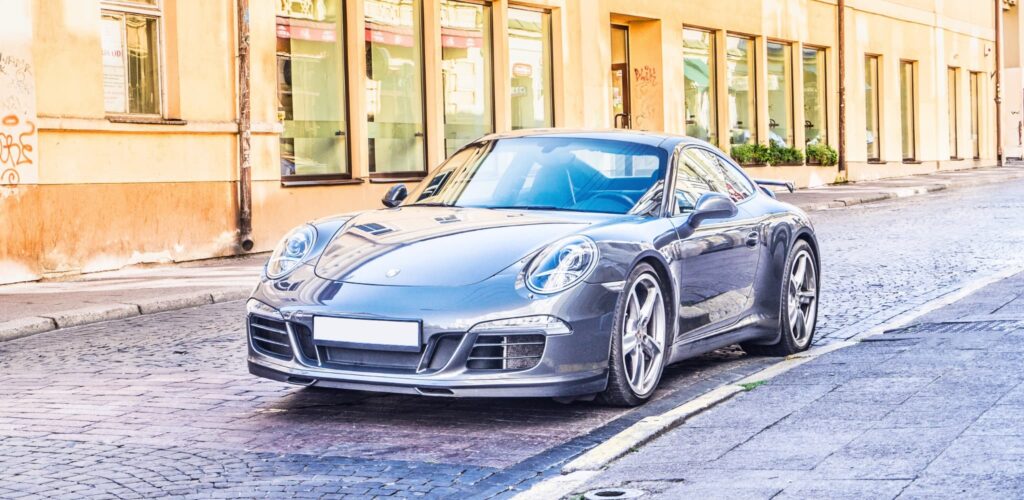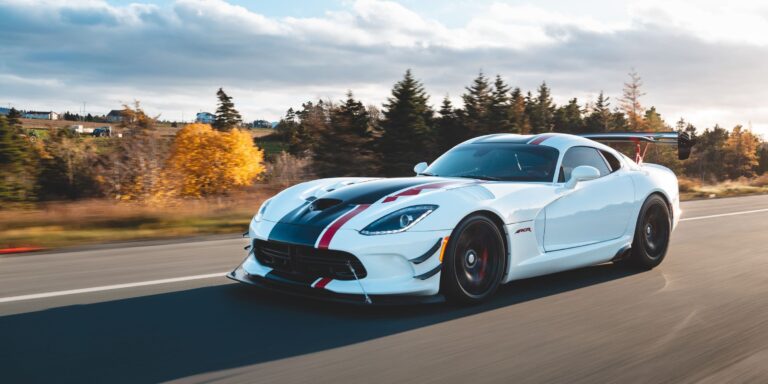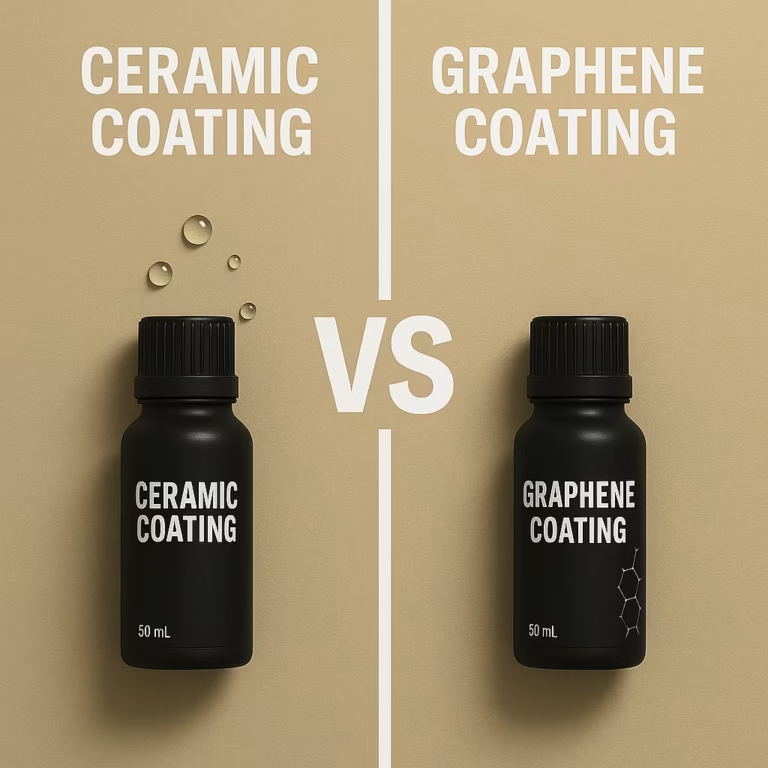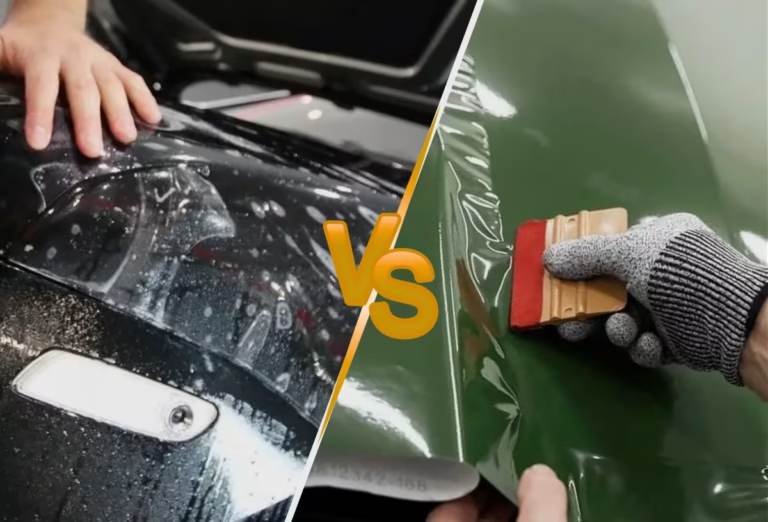Staying comfortable while driving has become harder in recent years, especially in states like California, where the sun can turn car interiors into an oven within minutes. Excessive heat inside your vehicle is more than just uncomfortable; it can lead to higher AC usage, faded interiors, skin damage from UV rays, and even safety risks caused by glare. Many drivers are now searching for the best car window tint for heat reduction to solve this problem.
By choosing the right window tint, you can block up to 99% of harmful UV rays, reject infrared heat, and maintain a cooler cabin without relying so heavily on air conditioning. In this guide, we’ll cover everything you need to know in 2025 about automotive window tinting for heat rejection, from how it works to the best films available and why professional installation is key. If you are considering upgrading your vehicle with premium tinting, this article will help you make the right choice while showing how OC Tint Solutions brings expert craftsmanship, trusted brands, and lasting results for drivers across Anaheim and Costa Mesa.
Why Heat Reduction Matters for Drivers
Rising temperatures are no longer just a seasonal issue. According to recent studies, car interiors can climb above 130°F in direct sunlight, even when the outside temperature is in the 90s. This creates serious health and comfort challenges for drivers and passengers. Prolonged exposure to extreme heat inside the car leads to increased fatigue, dehydration, and even long-term risks like skin cancer caused by UV exposure. Beyond personal health, vehicle interiors suffer too. Leather seats crack, dashboards warp, and electronic components degrade faster when subjected to constant heat and sun exposure. This means more money spent on repairs and replacements over time.
Car window tinting addresses these issues directly by providing a reliable barrier against both infrared heat and UV rays. Modern films are designed to block significant amounts of solar energy before it enters the cabin, reducing the interior temperature by up to 30–40%. For drivers in Orange County, this translates into cooler rides, less dependence on air conditioning, and even better fuel efficiency. As 2025 continues to bring hotter summers, understanding the value of heat rejection tint is more important than ever. It’s not just about comfort, it’s about protecting your health, preserving your car, and saving money in the long run.
How Window Tinting Reduces Heat Inside Your Car
Car window tinting works by using advanced film technology to control how much light and energy passes through your windows. The two biggest factors that affect cabin temperature are infrared radiation (IR), which carries heat, and ultraviolet rays (UV), which cause damage to skin and interiors. High-quality films such as ceramic window tint and crystalline tint are engineered with nano-ceramic particles that block up to 99% of UV rays and a significant percentage of infrared heat. This results in a noticeable drop in interior temperature even on the hottest days.
Another critical element is Visible Light Transmission (VLT), which measures how much natural light passes through the glass. A lower VLT percentage means a darker tint, but darker doesn’t always equal better heat reduction. For example, advanced ceramic tints can provide high heat rejection while remaining relatively clear, making them ideal for states like California, where tint laws limit how dark you can go. This allows drivers to enjoy the benefits of maximum heat reduction without sacrificing visibility or legality. By understanding how tinting works scientifically, drivers can make smarter choices and invest in films that truly perform, rather than just opting for cheap dyed films that fade quickly and offer little heat rejection.
Best Window Tint Options for Maximum Heat Reduction
When it comes to reducing heat inside your car, not all tints perform the same way. Many drivers assume that a darker tint always means better protection, but this is not true. The effectiveness of a window film depends on the materials used, its ability to block infrared heat, and its UV rejection capabilities. Ceramic and carbon window tints are considered the most effective options for drivers who want real results. These films use advanced technology to reject solar heat while keeping visibility clear and ensuring compliance with tint laws. On the other hand, basic dyed films are still available, but they do very little for actual heat rejection and tend to fade quickly under the sun. Choosing the right type of tint is essential if you want to protect your investment and enjoy a cooler, safer ride for years to come.
Ceramic Window Tint (Nano Ceramic, Infrared Rejection)
Ceramic window tint is widely regarded as the gold standard in heat rejection technology. Using nano-ceramic particles, these films block up to 99% of UV rays and an impressive portion of infrared heat, which is the primary cause of hot interiors. Unlike older metallic films, ceramic tints do not interfere with electronic devices such as GPS, cell phones, or radios, making them ideal for modern vehicles. Many premium brands like XPEL PRIME XR Plus and 3M Ceramic IR have developed nano-ceramic options that deliver high performance while still being legal in most states.
What makes ceramic tint truly effective is its ability to perform even at lighter shades. This means you don’t need a dark tint to feel cooler inside your car, a huge advantage in states like California, where laws restrict how dark front windows can be. Ceramic tint may cost more upfront, but its durability, lifetime warranties, and proven performance make it a long-term investment for anyone serious about reducing heat, protecting their skin, and keeping their car interior in pristine condition.
Carbon Window Tint (Affordable Heat Reduction Choice)
For drivers who want better heat rejection without the premium cost of ceramic films, carbon window tint offers an excellent middle ground. Unlike dyed films, carbon tints use carbon particles that reflect infrared heat more effectively, keeping the cabin noticeably cooler. They also provide a sleek matte finish that many car enthusiasts find visually appealing. Carbon films typically block 40–60% of infrared heat, making them far more effective than dyed tints but not quite as high-performing as ceramic.
One of the key advantages of carbon tint is that it doesn’t fade over time like dyed films. It maintains its performance and appearance for years, making it a reliable option for those on a budget. While it may not match ceramic films in overall performance, carbon tint is still a strong choice for everyday drivers who want to balance cost, appearance, and heat rejection. For customers at OC Tint Solutions, carbon films are often recommended as a cost-effective upgrade for drivers who want noticeable comfort improvements without investing in the most expensive options.
Dyed Films vs Ceramic Films: Which Works Best
Dyed films were once the most popular choice for car window tinting because of their affordability, they are no longer a smart investment for heat rejection. Dyed films provide a darker appearance but do little to block infrared heat. Over time, they also tend to fade, bubble, and peel, leaving your car looking worn down and offering minimal protection against high temperatures. Ceramic films, on the other hand, are engineered for performance. They use advanced materials to block both UV rays and infrared heat, resulting in significantly cooler cabins and much better long-term durability.
For drivers in Orange County, where summers can be particularly intense, ceramic tint is the clear winner. While dyed films might seem attractive because of the lower upfront cost, they often lead to frustration and the need for reinstallation within a few years. By contrast, ceramic films provide lasting benefits, often with lifetime warranties, making them a much more cost-effective solution over time. If the goal is maximum heat reduction and long-term satisfaction, ceramic films are the best option.
Top Window Tint Brands for Heat Rejection
Choosing the right type of film is one thing, but selecting a trusted brand is equally important. Not all window tints are created with the same quality, and many low-cost, unbranded products fail to live up to their claims. The best heat rejection tints come from established manufacturers with proven track records. Brands like XPEL, 3M, Llumar, and SunTek lead the industry because of their consistent performance, warranties, and innovative film technologies. These manufacturers invest heavily in research and development to ensure their products meet the needs of drivers who want real results in heat rejection, UV protection, and long-term durability.
XPEL PRIME XR and XR Plus
XPEL has quickly become one of the most trusted names in the tinting industry, and its PRIME XR and XR Plus series are among the best-performing films for heat rejection. The XR series uses nano-ceramic technology to block up to 88% of infrared heat and 99% of UV rays. The XR Plus takes performance even further, offering one of the highest IR rejection rates available on the market. These films are known for their clarity, durability, and lifetime warranty, making them an excellent investment for drivers who prioritize comfort and protection.
3M Crystalline & 3M Ceramic IR
3M has been a pioneer in the automotive film industry for decades, and its Crystalline and Ceramic IR series remain industry leaders. The Crystalline series is particularly unique because it offers high heat rejection without being dark, making it perfect for drivers who want maximum performance while staying compliant with California’s strict tint laws. The Ceramic IR series provides exceptional infrared rejection using nano-ceramic particles, ensuring cooler cabins and long-lasting performance. Both series come with trusted 3M warranties and are widely recognized as some of the best films for balancing performance, appearance, and compliance in 2025.
Llumar IRX & FormulaOne Pinnacle
Llumar’s IRX and FormulaOne Pinnacle films are designed for drivers who want advanced heat rejection paired with excellent optical clarity. The IRX series focuses on blocking infrared heat and harmful UV rays while maintaining a sleek look. FormulaOne Pinnacle, often considered Llumar’s premium product, provides high levels of comfort and durability backed by a nationwide warranty. These films are especially popular with drivers who want reliable performance from a brand with decades of experience in automotive protection.
SunTek CIR and Other Competitors
SunTek’s CIR series offers strong heat rejection capabilities through ceramic film technology, making it a solid choice for drivers who want effective protection at a competitive price point. While not as widely recognized as XPEL or 3M, SunTek has built a reputation for reliability and performance. Other brands, such as Huper Optik and Solar Gard, also provide high-performing ceramic films, though availability can vary by region. At OC Tint Solutions, the focus remains on offering trusted, premium brands to ensure customers always get films that live up to their promises of heat reduction and durability.
Choosing the Right Window Tint for Your Car
Selecting the best tint is not just about performance specs; it also depends on your unique needs, budget, and local regulations. With so many films available, choosing wisely ensures you get the most value for your investment. A combination of brand reputation, warranty coverage, film performance, and expert installation will determine how satisfied you are with your tint years down the road.
Factors to Consider (budget, warranty, VLT laws, performance)
Before making a decision, consider your budget, the warranty offered, and the legal VLT limits in California. Darker tints may look appealing, but if they are not legal, you could face fines or be forced to remove them. Performance should always be a priority, especially if your goal is maximum heat reduction. Premium ceramic films may cost more, but they offer the best combination of comfort, durability, and warranty protection. A reliable film should last for many years without fading, peeling, or bubbling, which is why brand reputation matters so much.
Why Professional Installation Matters (Computer-Cut vs Hand-Cut)
Even the best film won’t perform properly if it’s not installed correctly. Poor installation can lead to bubbling, peeling, or gaps that reduce effectiveness. At OC Tint Solutions, professional installation is guaranteed through the use of computer-cut precision systems, which ensure an exact fit for your vehicle’s windows. This eliminates the risk of cutting errors and provides a clean, factory-quality finish. Hand-cut installations may save time for some shops, but they often lack the precision needed for long-lasting results. By choosing a professional installer with advanced tools and years of experience, you protect your investment and ensure your tint delivers the maximum heat rejection possible.
Key Benefits of Car Window Tint for Heat Reduction
Investing in high-quality window tinting goes far beyond just improving how your car looks. The benefits of heat reduction tint impact nearly every aspect of driving, from comfort to long-term savings. The most noticeable advantage is the cooler cabin environment. By blocking infrared heat, ceramic and advanced films can lower interior temperatures by up to 30–40%, which means stepping into your vehicle after it has been parked in the sun is far more comfortable.
Another important benefit is the protection of your car’s interior. Constant exposure to sunlight causes seats, dashboards, and other materials to crack, fade, or warp over time. Heat reduction films act as a barrier, extending the life of your vehicle’s interior while maintaining its resale value. Drivers also see fuel and energy savings, since running the air conditioning less often reduces strain on the engine and increases efficiency. On top of that, premium window films provide 99% UV protection, which is essential for preventing skin damage and long-term health risks such as skin cancer. Privacy and safety also improve with tinting, as films make it harder for outsiders to see inside the vehicle and hold glass together in the event of a break. Collectively, these benefits make window tinting a smart upgrade that provides value far beyond the initial installation cost.
Why Choose OC Tint Solutions for Heat Reduction Tinting in Orange County
When choosing a shop for car window tint installation, expertise and product quality make all the difference. At OC Tint Solutions, every installation is carried out by certified professionals with years of experience in automotive tinting. The shop offers some of the most respected brands in the industry, including XPEL PRIME XR, 3M Crystalline, 3M Ceramic IR, Llumar IRX, and SunTek CIR, giving customers access to films that are proven to deliver maximum heat rejection and long-term durability.
What sets OC Tint Solutions apart is their commitment to precision. The team uses computer-cut technology, ensuring that every film matches the exact measurements of your car’s windows. This avoids cutting errors and delivers a clean, factory-quality finish. Customers also receive a lifetime warranty on both the film and the installation, providing peace of mind and long-term protection for their investment. With two convenient locations in Anaheim and Costa Mesa, OC Tint Solutions has earned the trust of hundreds of drivers across Orange County who consistently leave positive reviews about their workmanship, professionalism, and customer service. If your goal in 2025 is to stay cooler on the road while protecting your health and your vehicle, OC Tint Solutions is a clear choice.
FAQs on Car Window Tint for Heat Reduction
Does darker tint mean better heat rejection?
Not necessarily. Darkness (VLT level) and heat rejection are two different factors. A dark dyed film may block visible light but does very little to reduce infrared heat. High-quality ceramic tints can reject more heat even at lighter shades, making them more effective and legal in California.
Is ceramic tint worth the cost?
Yes, ceramic tint is widely considered the best option for heat reduction. While it costs more than dyed or carbon films, it provides unmatched performance in infrared and UV rejection, durability, and clarity. Over time, the savings in fuel, interior protection, and comfort make ceramic tint a smart investment.
Can I combine tint with windshield film for better results?
Absolutely. Adding a clear heat rejection film to the windshield provides even greater protection against infrared heat without reducing visibility. This combination creates maximum comfort, especially during long drives under direct sunlight.
How long does high-quality tint last?
Premium films like those from XPEL, 3M, Llumar, and SunTek can last for decades with proper installation and care. With lifetime warranties, you can expect long-term performance without fading, peeling, or bubbling.




